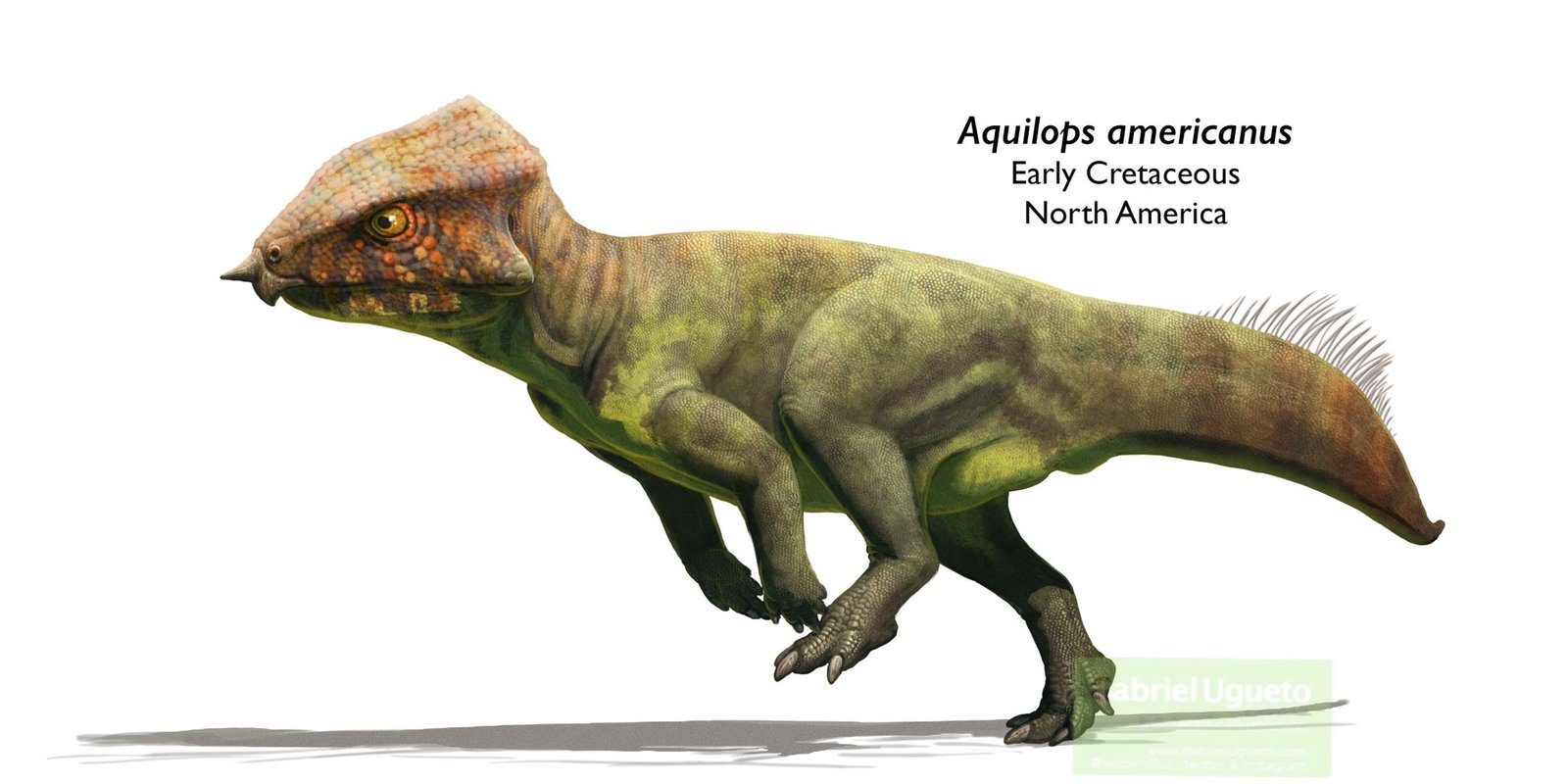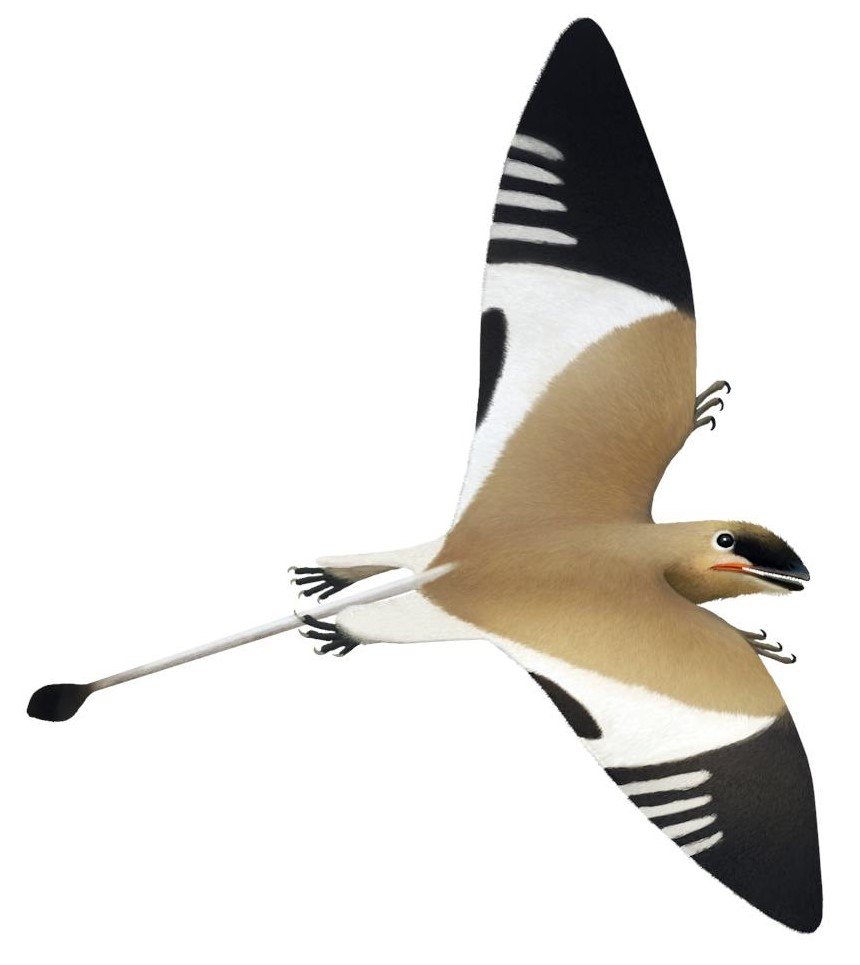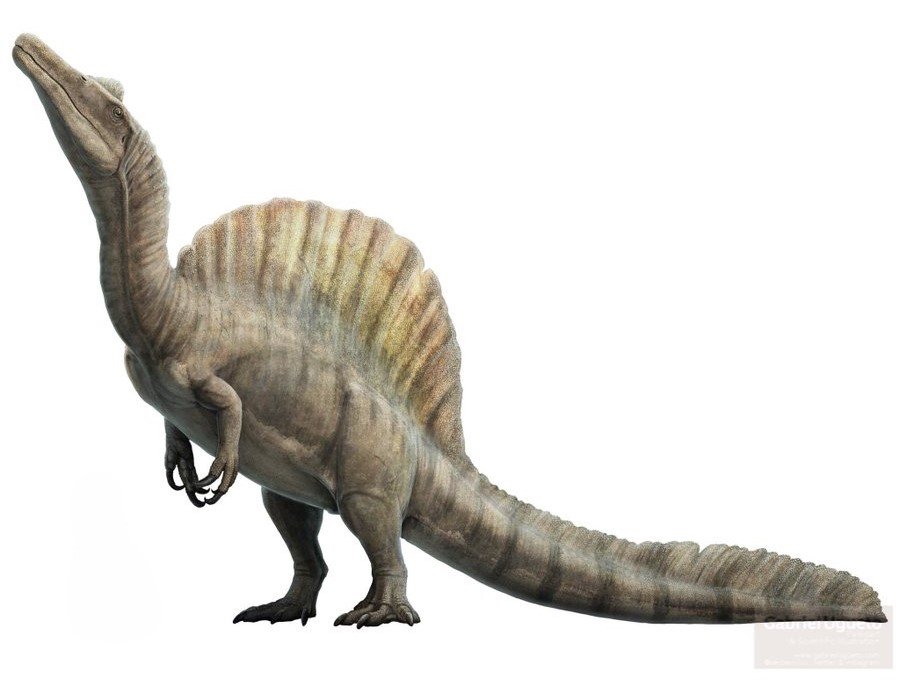
Introduction:
Aquilops is one of the many small dinosaurs that inhabited Earth in the Early Cretaceous Period. In most cases, the large and terrifying dinosaurs get most of the spotlight. But they were a lot of smaller dinosaurs that ran around on the planet. You might be wondering then why am I giving this dinosaur a spotlight when bigger dinosaurs get that already. Because I believe every dinosaur should be known to the public regardless of the popularity status. Aquilops is also rumored to appear in the latest Jurassic World film, Jurassic World: Rebirth. It might be great for you to know before you see it in the theaters!
Discovery:
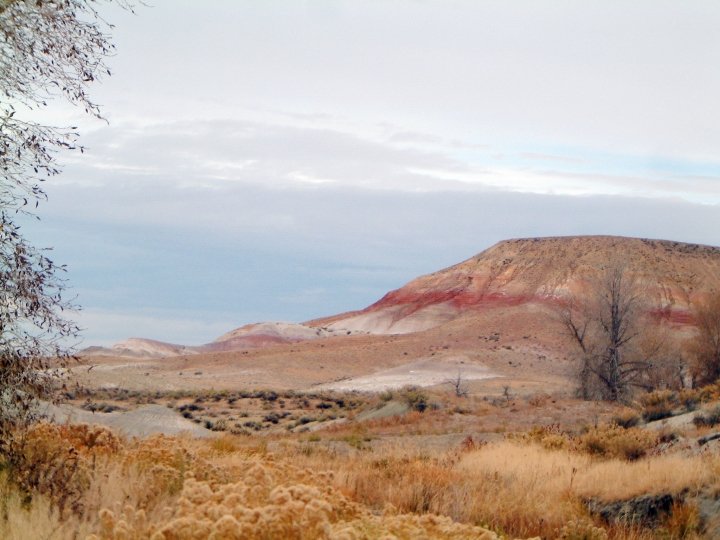
Aquilops was first discovered in the year of 1997, in the Cloverly Formation of Carbon County which is in Southern Montana. The fossil expedition was supported by National Geographic Society, directed by Richard L. Cifelli, and the paleontologist, Scott Madsen. They found the fossil which was a partial skull. It is the only known fossil we have of this little guy. But it was not always called Aquilops. When the paleontologists were preparing the skull, basically cleaning up the rocks from the skull bones, they thought it was another species of an already discovered dinosaur, Zephyrosaurus. But they realized that the new skull fossil they had was a new dinosaur.
History of Aquilops:
Later in 2014, it was properly named and described to be as Aquilops americanus. The dinosaur was described and studied by several paleontologists, Andrew Farke, W. Desmond Maxwell, Richard L. Cifelli and Matt J. Wedel. Aquilops name was derived from Latin ‘aquila‘, which means eagle and Greek ‘ops‘, meaning face. And it was named as such because of the beaked snout/mouth. The species name, ‘americanus‘, is referring to the fact that the genus represents the first, unquestionably, very basal Neoceratopsian found in America.
There are a lot of Neoceratopsian dinosaurs. And the reason these small critters are important because they show the classic ape to man kind of line in case of the large horned face dinosaurs. These small critters started to evolve sharp beaks as well as a frill at the back of the head, walked on 2 legs like any small dinosaur. As they evolved in time, they grew bigger and started walking on 4 legs. They grew bigger frills and also started to grow horns on the face. And it just looks great, to see how it changed from a tiny critter to one of the heavyweights of herbivorous dinosaur which were very dangerous. Just cause they eat leaves does not mean they cannot attack you if you provoke them!
Either way, one can say Aquilops was one of the many Neoceratopsian which started to give rise to larger Ceratopsian in the future Cretaceous Period. And there have been other Ceratopsian which does show the next evolutionary step like the Leptoceratops and Zuniceratops to Diabloceratops and then we have the classic ones like Chasmosaurus, Styracosaurus and Triceratops.
Biology:
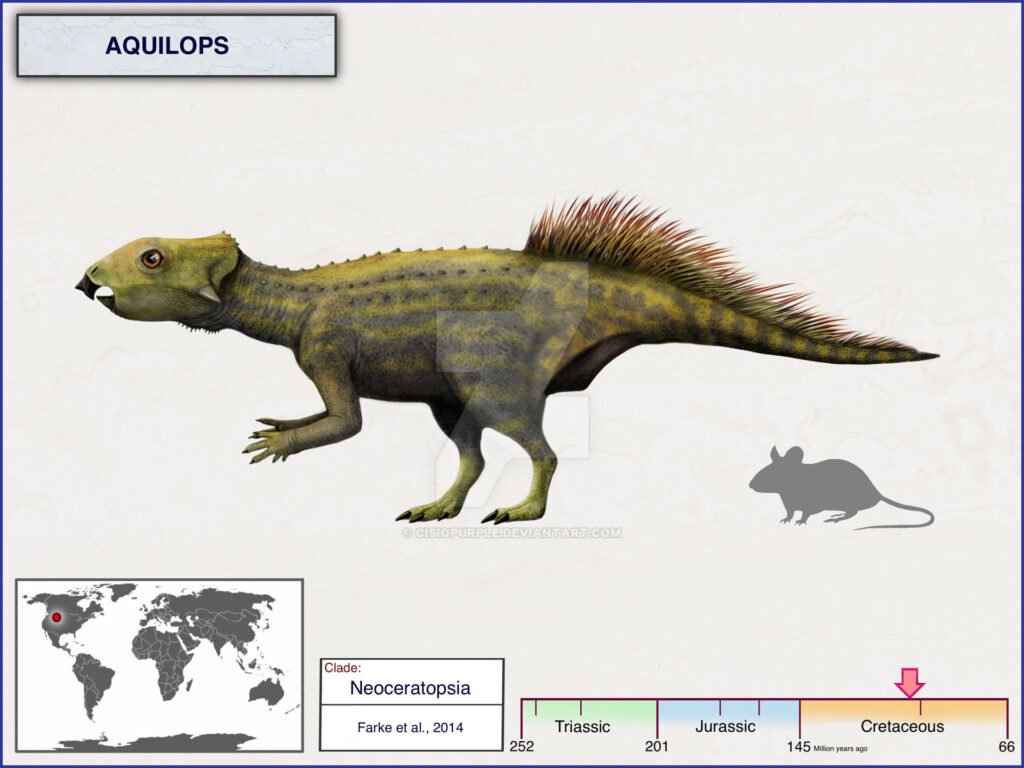
How big is Aquilops Americanus?
The skull of the Aquilops is thought to be of a sub-adult and so the sizes may not be accurate completely but it should be around that ballpark. Aquilops is thought to be around 0.6 meters (2 feet) long, 0.3 meters (1 feet) tall and weighed around 1.6 kilograms. Not a huge dinosaur by a long way and much of the body paleontologists show is inferred from other similar genera to give us a complete look at this dinosaur. After some further research, paleontologists believe that the fossil for this dinosaur they have found is around 60% of what a fully grown adult may have been.
Aquilops Skull:
But as we have discovered the skull, this makes Aquilops very easy to identify as a different genus from other similar dinosaurs. They found some unique traits like how the bone core of the mouth beak curves downwards as well as having a little spike on the front of the beak. Dinosaur skulls usually has an another opening before the eye socket opening and for the Aquilops, it’s one was twice as long as it was tall as well as the upper jaw with a point right below the eye socket.
While Aquilops was placed in Neoceratopsian family because of it’s basal qualities. It was even more basal than Leptoceratops, when it was considered to be the most basal. Paleontologists had to place this critter at the bottom of the family tree which is why paleontologists were being extra careful to not misidentify with other genera because the skull was not an adult and young ones tend to show basal qualities than adults which slowly go away.
Ancestry of Aquilops:
But after even more analysis and studies, what the paleontologists thought of Aquilops being a basal member of the Neoceratopsian family was true and that it was one of the very first Ceratopsian to evolve. What puzzled the most to paleontologists was that it was found in North America and not in Asia. In Asia, there are an abundant genera of dinosaurs like Aquilops and this also supports the theory migration from Asia to North America in the Early Cretaceous Period. Another such migration event had also happened a little later after the Aquilops’ ancestor migration event.
Cretaceous Asia does seem to have a lot of dinosaurs in their base forms migrating to North America probably through the land bridges that existed back then. Now the reason for why such migration events happened is unknown but many other dinosaur families did cross through the land bridge which was from Russia to Alaska like the Tyrannosaurs, Ceratopsians, Ankylosaurs as well as Titanosaurs.
What are the predators of Aquilops?
There were not a lot of predators where Aquilops lived but the notable ones are Acrocanthosaurus, a high-spined carcharodontosaurid, Deinonychus, a dromaeosaur, & Microvenator, an extremely rare oviraptorosaurian. I am pretty sure Acrocanthosaurus would bother eating an Aquilops as it is such a small creature that it would fill up it’s belly but for Deinonychus and Microvenator, it would be a delicacy.
What did Aquilops eat?
Aquilops ate vegetation like small plants, shrubs, grasses and ferns because it was a herbivore. As it was the Early Cretaceous Period, they had a lot of plant variety for them to chow down and this abundance and also the threat of predators might have pressured them naturally to evolve into the larger ceratopsians like Triceratops and many more.
Media:
Although Aquilops does not have any media in any sort of films, series, games and many more right now. But within a couple of months, it will have one of the most largest appearance it could have, appearing in a Jurassic World film. Any dinosaur or prehistoric creature that has appeared in Jurassic franchise has become popular, if given a good chunk of screentime. I really hope that, not only the design is good looking. But it has enough things to do in the film. And does not end up like a background dinosaur like one of its relative, Microceratus. I will probably write a blog post about Microceratus in the future.
Merchandise:
Like you, I am also waiting what kind of merchandise might be release when marketing the Jurassic World: Rebirth film. I really hope they have some good figures for me to buy as well.
Lo and behold, the Aquilops action figure has been showcased. While it is more of a kid-friendly version of the usual Jurassic World action figures. This will definitely be a welcome addition to anyone’s collection. It is an interactive action figure where it can react to certain actions. And also ‘protect’ you from danger, I mean it is called ‘Primal Protector Dolores’ and yes, it has a name! I find name to be cute for a cute dinosaur like this one. Anyways here it is.
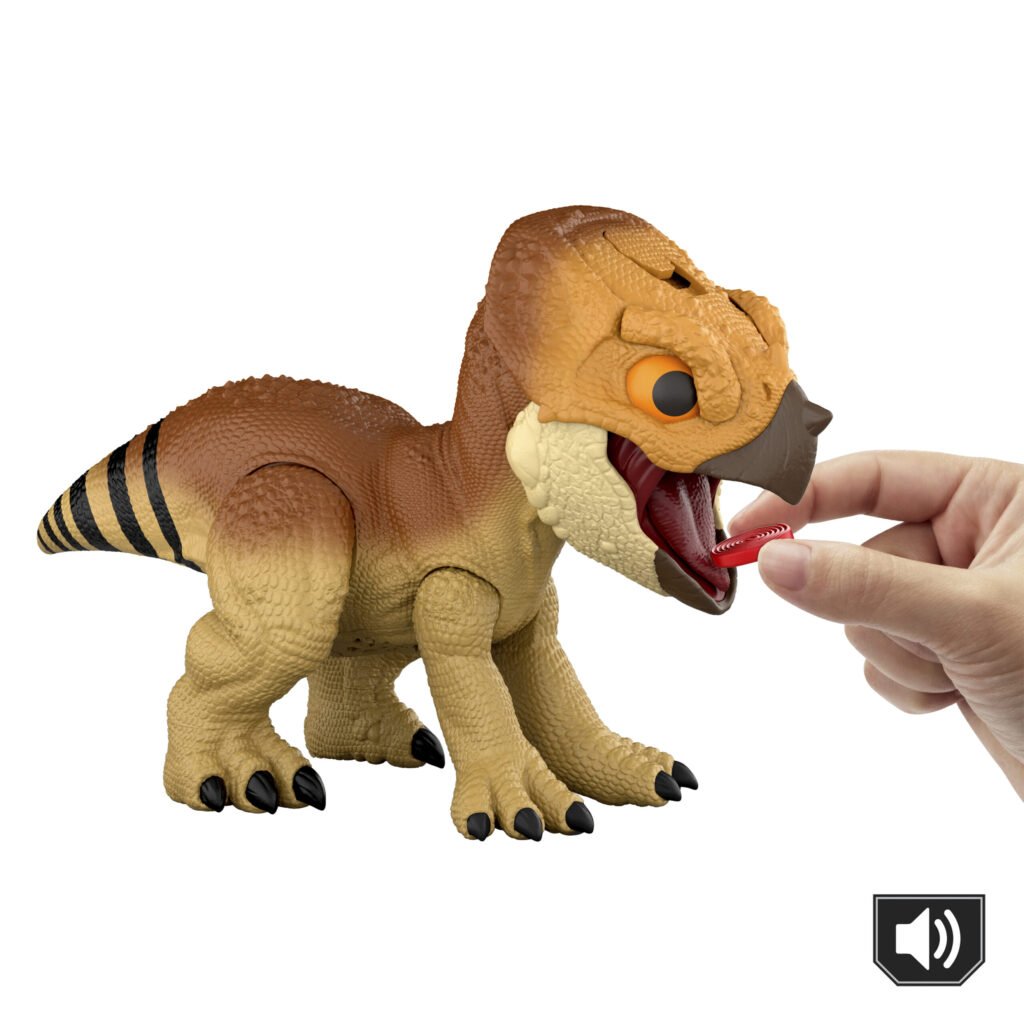
This is it for now and the end for the blog post of Aquilops. I hope you learned a lot about this tiny bugger of the forest floor. I hope you can comment down below on what dinosaur, pterosaur or marine reptile you want to see next. See you again soon in my other posts! You can check out more dinosaurs or other prehistoric creatures post from the Species Profile page!!!!
References:
- Farke, Andrew A.; Maxwell, W. Desmond; Cifelli, Richard L.; Wedel, Mathew J. (2014-12-10). “A Ceratopsian Dinosaur from the Lower Cretaceous of Western North America, and the Biogeography of Neoceratopsia”. PLoS ONE. 9 (12): e112055. Bibcode:2014PLoSO…9k2055F. doi:10.1371/journal.pone.0112055. PMC4262212. PMID25494182.
- Crofts, Natalie (2014-12-12). “Utah paleontologist shares tale of discovering cat-sized dinosaur”. KSL.com. Salt Lake City: Deseret Digital Media. Retrieved 2014-12-23.

